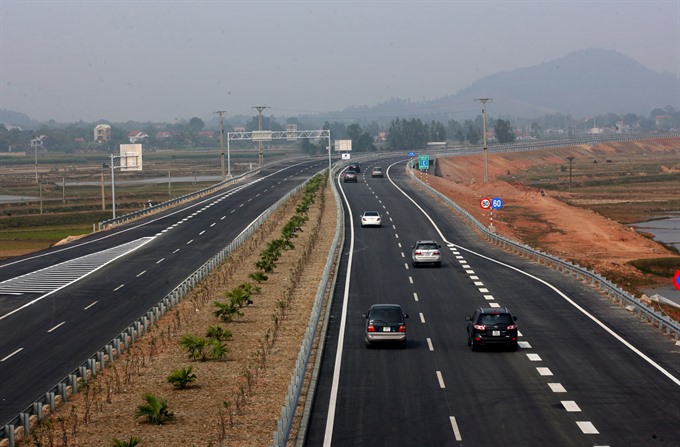 Economy
Economy

Current shortcomings in road transport across the border between Việt Nam and other countries in the region need to be solved to enhance development and connectivity to international road transport system, experts said.
 |
| A section of Nội Bài – Lào Cai Expressway. The expressway is part of Asian Highway No 14. Việt Nam has geographical advantages for transnational transport, but current difficulties create barriers to international transport connections, an official said. — VNA/VNS Photo Huy Hùng |
HÀ NỘI — Current shortcomings in road transport across the border between Việt Nam and other countries in the region need to be solved to enhance connectivity to the international road transport system, experts said.
Deputy General Director of the Việt Nam Road Administration Phan Thị Thu Hiền recently stated that Việt Nam has many geographic advantages to participate in transnational transport, but current difficulties have created many barriers to international transport connections and socio-economic development.
Although Việt Nam and other regional countries such as Laos, Cambodia, Thailand have made agreements to facilitate road transport, border linkage has not been fully implemented due to differences in legislation systems, Hiền said.
According to traffic experts, road transport agreements have facilitated trade and tourism development and cost reduction, increased competitiveness and contributed to the socio-economic development.
Many border agreements have been adopted. But number of vehicles traveling through border gates among countries in the region is still limited, Hiền said.
Nguyễn Tương, Deputy General Secretary of Việt Nam Logistics Association said although many transport agreements were signed among countries but regulations of the countries has not yet unified so it was making difficulties to multilateral transport operation.
Such problem includes left or right driving, insurance liability for motorised vehicles, lack of storage or delayed procedures, Tương said.
In addition, incomplete traffic systems at main border gates between Việt Nam and Laos and Cambodia has reduced the efficiency of cross-border road transportation, experts said.
Many border gates could not meet demand of transportation in peak hours, Tương said.
He suggested that Việt Nam needs to quickly build a strategy and policies for the development of cross-border transport, especially transport corridors.
This will be particularly significant when the country integrates into the ASEAN Economic Community, he said.
There should be more policies developing cross-border transport of goods in transit in order to attract goods from Cambodia and Laos, especially goods transported by containers.
According to head of Ministry of Transport’s Road Safety Department Nguyễn Văn Thạch, the current bilateral agreements on road transport between Việt Nam and other countries in the region have progressed very slowly.
At present, only few Vietnamese transport businesses have licensed freight international roads in the territory of the countries of Việt Nam, Laos, Cambodia, Thailand, Myanmar and some provinces of China, Thạch said.
To facilitate the transport, ASEAN countries need to formulate regulations and simplify the administrative procedures in order to speed up the implementation of one-stop-shop customs models so as to halve the time of customs clearance procedures, promote connections and trading among countries in the region, he added.
As an example, he showed how the customs clearance time between Việt Nam and Laos at border gate reduced sharply since applying this model.
It costs only 15 minutes for truck to do customs declaration at Lao Bảo-Densavan international border gate between Việt Nam and Laos, he said.
"Việt Nam has the advantage of being located on the transit of international routes, so the cross-border transport plays a special role. Therefore, relevant agencies need to join hands to strengthen enforcement of the signed agreements on cross-border transport development," said Thạch. — VNS




